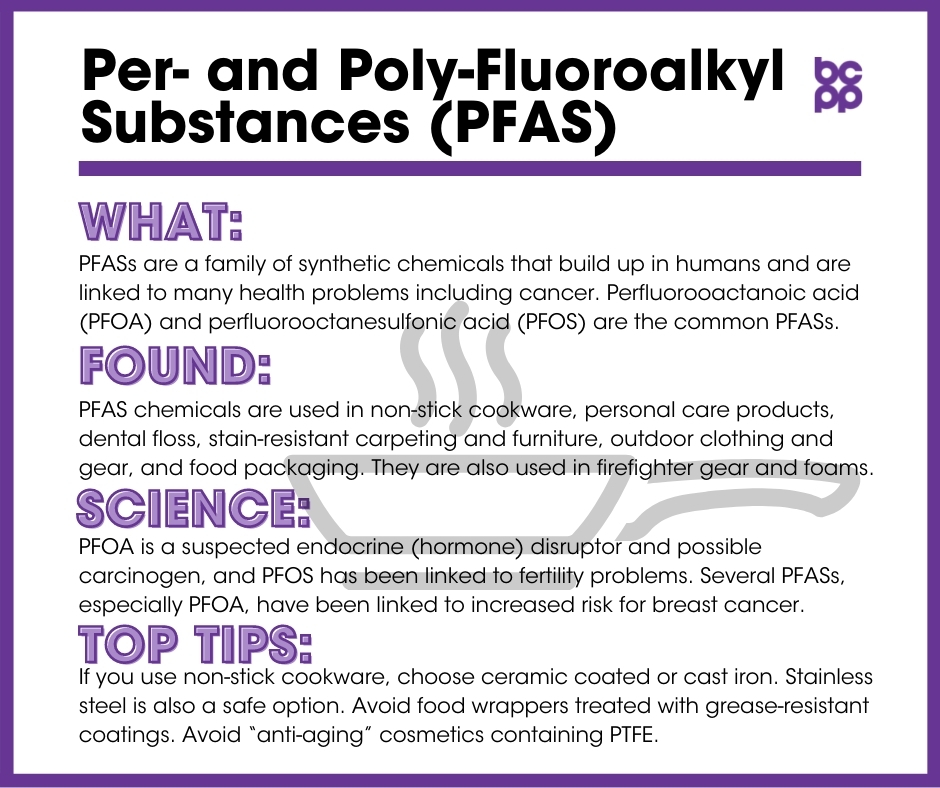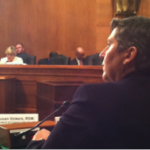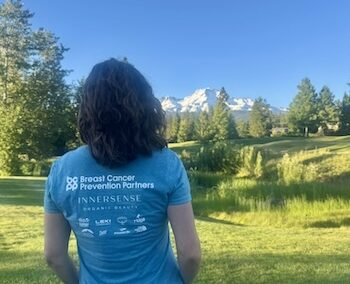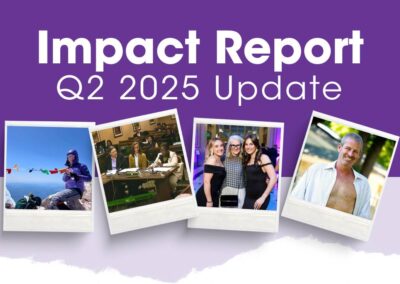If you’ve been shopping for cookware recently, you’ve probably seen a slew of labels that say: “PFOA-free,” “PFOS-free,” “PTFE-free,” “PFAS-free.” If this alphabet soup is confusing to you, you are not alone. The good news: help is on the way! The BCPP-co-sponsored CA Safer Food Packaging and Cookware Act, or AB 1200, which Governor Newsom just signed into law, will put an end to confusing and misleading marketing claims about harmful chemicals in your cookware, and ban PFAS Forever Chemicals from paper-based food packaging.

The “miracle of modern chemistry” brought us the non-stick pan, with the brand name Teflon, back in the mid-1940s. Unfortunately, the chemicals that created this modern convenience are part of a class of toxic chemicals known as per- and polyfluoroalkyl substances or PFAS, commonly called Forever Chemicals.

The early versions of Teflon were made with a specific PFAS chemical: perfluorooctanoic acid, or PFOA. As one of the oldest and best studied of this chemical class, it became clear, even to chemical manufacturers, that they should stop using this extremely toxic chemical. To give you a sense of just how toxic, the California EPA recently recommended a public health goal for PFOA in drinking water of 0.007 parts per trillion (ppt)! Perfluorooctanesulfonic acid, or PFOS, is a similarly toxic sister chemical with a suggested safe level in of 1 ppt. Even though PFOS is not used in cookware, manufacturers still use its bad name for marketing purposes, claiming pans are “PFOS-free.”

- To workers and the environment during production
- To consumers using the pans at high temperatures
- To communities and the environment when the pans are disposed and incinerated
A recent study by our colleagues at the Ecology Center, What’s Cooking? PFAS and Other Chemical Hazards in Nonstick Cooking and Baking Pans, tested the non-stick linings of cooking and baking pans and found not only PFAS chemicals, which were expected, but also the hormone disrupting chemical BPA (bisphenol A). The discovery of BPA was surprising and raised questions like how many pans out there are using BPA, and what other chemicals are in pans that we don’t know about?

Another important finding of the What’s Cooking? report was that many of the pans lined with PTFE (the newer PFAS)––made a claim on the package that the pan was “PFOA-free.” While technically correct, advertising a pan as free of PFOA while not saying that it is made of another PFAS chemical is misleading. It gives consumers a false sense that they are avoiding this class of toxic chemicals.
Thankfully, California’s AB 1200 prohibits this kind of greenwashing. Under the new law, labels and websites can’t claim a product is free of a specific chemical if the product contains another one belonging to the same hazardous chemical family.
Cookware joins the list of products—cleaning products, professional salon products, and fragrance and flavors in beauty and personal care products—which now must disclose their ingredients, particularly the hazardous chemicals in the product, thanks to California legislation passed with the leadership of BCPP.
Accurate labeling of the toxic chemicals in products like pots and pans helps us all to make more informed choices when we shop.




